B Ü R O S E D A K U R T Ş E N G Ü N
Bahçe, Peyzaj Mimarlığı ve Kentsel Tasarım
Serbest Meslek Müşavirlik Bürosu
Bureau of Gardens, Landscapes and Urban
B Ü R O S E D A K U R T Ş E N G Ü N
Bahçe, Peyzaj Mimarlığı ve Kentsel Tasarım
Serbest Meslek Müşavirlik Bürosu
Bureau of Gardens, Landscapes and Urban
T O P R A K O C A Ğ I
E A R T H Q U A R R Y
2025 Venedik Mimarlık Bienali 19.Uluslararası Mimarlık Sergisi
Ulusal Katılımcılar Türkiye Pavyonu Davetli Proje Karapınar Güneş Santrali
10.05—23.11.2025 Sale d’Armi, Venedik Arsenal Türkiye Salonu, İtalya
2025 Venice Biennale Architettura 2025 19th International Architecture Exhibition
National Participants Turkiye Pavillion Invited Project Karapınar Solar Power Plant
10.05—23.11.2025 Sale d’Armi, Arsenale Türkiye Hall Venice, Italy
2021 Portfolyo Seçkili Ulusal Özel Proje Yarışması
Toprak Kule Mimari Proje ve Toprak Ocağı Peyzaj Mimarlığı Projesi 2.Ödül
2021 Portfolio Shortlisted National Private Project Competition
Soil Tower Architectural Project and Earth Quarry Landscape Architecture Project 2nd Prize
+ Karapınar Solar Power Plant SCADA + 8400 m2
+ 2021 + Completed Project + Please swipe left for documents >
+ Owner Kalyon PV Construction
+ Collaboration + Ömer Selçuk Baz Ece Özdür Eda Gürhan Atakan Koca Ece Toprak Yalın Architects
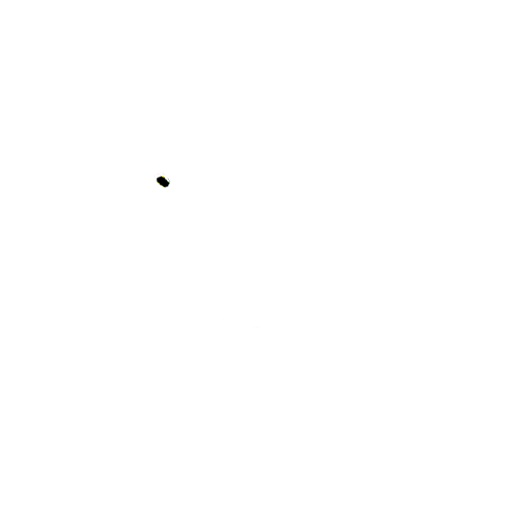


B20_07 Landscape Architecture Project Events Alphabet Etkinlikler Alfabesi
TR manifesto
Toprak Ocağı: Yeni Bir Peyzaj Mimarlığı
‘Toprak Kule’nin ‘Toprak Ocağı’ yeni bir peyzaj mimarlığı. Bu yeni düzen kuleyi yeryüzü ile, yeryüzünün maddesi toprakla kurar. Bu özel projede jenerik olmayan, zemine özgü dinamiklerle kendini dönüştürebilen, tek bir odaktan veya hayatlarımızın baskın kabullerinden değil, yeni bir sosyoloji ve ekonominin peyzaj mimarlığını anlatıyoruz.
Ortak fikrimiz proje sınırlarının belirlediği zeminin tuzlu ve çorak topraklarının kuleyi ve bu yeni peyzajı inşa edebileceğidir. Bu vesileyle, kulenin temel yapısal elemanlarını ve peyzajı biçimlenişini sağlayacak temel yapı elemanlarını bu yerin tuzlu çorak zemininden bloklar olarak tanımlayacağız. Bu bloklar tam da bu yerde bir ‘makine-heykel’ ile hesaplanacak, icat edilecek ve üretilecektir. Hem bu tuz-toprak blokları hem de tuz-toprakların tektoniğiyle, tesviyelerle toparlanan tuz-topraklar için hikaye şöyle devam etmelidir: Makine Modu 1: Tesviye tuz-toprakları, insan araçlarıyla makine-heykelin üretim hattına kademeli olarak yüklenir. Bu hatta görevli kapsül yapılar tuz-toprağı karıştırır ve sıkıştırır. İcat edilen tuz-toprak bloklar, kuleye doğru vinç kolları ile blok örgüler ve peyzajı yere doğru vinç kolları ile dikmek için şekillendirilmiş tuz-toprak setlerine aktarılır. Bu işlem yaşamı kurmaz, yaşam, zaman ve ilişkilerle birlikte kurulabilir.
Doğa, insanların algılayabildiği veya algılayamadığı zaman dilimlerinde kendini dönüştürür. Mimarlık ve peyzaj mimarlığı pratiğindeki insan odaklı yaklaşım, doğadaki uzay-zaman ilişkisini yıpratır ve ilişkilerin doğadaki bütünlüğünü insan için bükmeye çalışır. Çöl-çorak-tuz-toprak denkleminde, yalnızca insanlara odaklanmak mümkün değildir, peyzaj mimarisi aracılığıyla bu haşin doğanın varlığı ve malzemeleriyle yeni bir yaşam kurulabilir.
Tuz-toprak blokları hazırladık ve buradaki ilk oluşum olan makine-heykel bir kule olarak ortaya çıktı, peyzajın karakteri oluştu. Peyzaj bir yaşamı kurabilmeli, bu nedenle hikaye şimdi devam ediyor: Makine Modu 2: Makine-heykelin tuz-toprak kapsülleri tohum-su kapsülleriyle değiştirilir. Bu kapsüllere ulaşan makine-heykel vinç kolları, topladığımız ve kapsüllerde biriktirdiğimiz, yerdeki koyunların otlamasına dirençli bozkır tohumlarını tuz-toprak peyzaj teraslarına dağıtıyor. Kapsüllerde topladığımız yağmur suyunu, bozkırın dirençli tohumlarının çimlenebilmesi için hesaplıca tuz-toprak teraslara doğru püskürtüyoruz.
Çimlenen tohumları gözlüyoruz, kule emekçileri fidelerin sahipliğini almaya, onları korumaya, büyütmeye ve bizden başka canlıların hayatlarının bu yöreye yerleşip yerleşemeyeceğini anlamaya başlıyorlar. Yavaş yavaş, buradaki yaşam, şimdi ve gelecek için antroposen olan ve insan pratiği ile nispeten dengeli güç ilişkileri olan geçmiş bir doğaya özgü sabır ve azim özlemine eşlik eden bir psikoloji ile evriliyor. Burada tuz-toprağı araştırıyoruz ve sentetik eylemlerle tuz-toprak-yaşamını dönüştürmeye cesaret edemeyen peyzaj mimarlığı, bu gerçeklikle tam da bu yerde yüzleşiyor.
B20_05 Peyzaj Mimarlığı Projesi Orijinal Metin / Manifesto Toprak Ocağı: Yeni Bir Peyzaj Mimarlığı
561 kelime manifesto ve birlikte B20_07 Etkinlikler Alfabesi ve B20_08 Tektonikler 4 x 4 cm 4 Parça Halinde
2025 Venedik Mimarlık Bienali 19.Uluslararası Mimarlık Sergisi Edisyonu
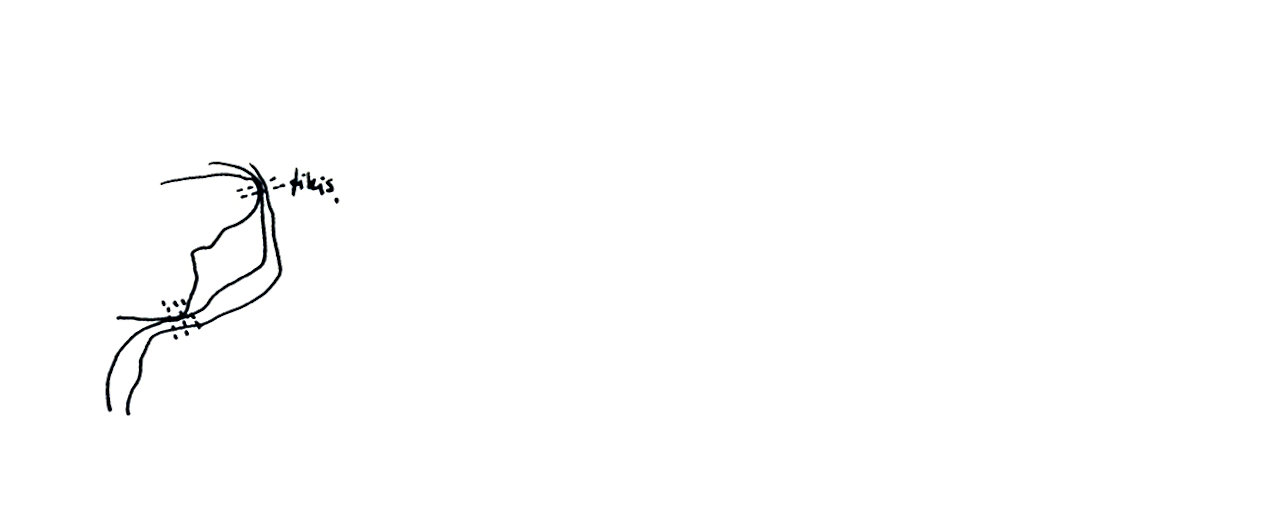
B20_08 Landscape Architecture Project Tectonics Tektonikler
ENG manifest
Earth Quarry: a New Landscape Architecture
‘Soil Tower’s ‘Earth Quarry’ is a new landscape architecture. This new order establishes the tower with the ground, the source of the ground with the soil. It works by considering the content of the soil for the architecture of the ground. In this special project, we describe the landscape architecture of a new sociology and economy that has no generic specific to the ground, that can transform itself with the dynamics specific to that ground, not from a single focus or the dominant acceptances of our lives.
Our common idea is that the salty and barren soils of the ground determined by the project borders can build the tower and this new landscape. On this occasion, we will define the basic structural elements of the tower and the basic stitch-structural elements of the landscape as blocks from the salty barren ground of this place, these blocks will be calculated and invented and manufactured with a ‘machine sculpture’ right in this place. The story should continue as follows for both these salt-soil blocks and the salt-soils that are collected with the new tectonic formation of the salt-soils, that is, the new landscape architecture and leveling: Machine Mode 1: Leveling salt-soils are gradually loaded onto the production line of the machine-sculpture by human vehicles. The capsule structures on duty in this line mix and compress the salt-soil. The invented salt-soil blocks are transferred to shaped salt-soil sets to line the tower with crane arms towards the tower and to erect the landscape with crane arms towards the ground. This doing does not establish life, life can be established together with time and relationships.
Nature transforms itself in time periods that humans can or cannot perceive. The human focus on which the practice of architecture and landscape architecture focuses narrows the space-time in nature and makes nature focused on human existence. In the equation of desert-barren-salt-soil, it is not possible to focus only on humans, a new life can be established with the existence and materials of this harsh nature through landscape architecture.
We had prepared salt-soil blocks and the first formation in this place, the machine-sculpture, emerged as a tower, and the landscape character was formed. The landscape should describe a life, we should start this life by also considering nature. The story continues now: Machine Mode 2: The salt-soil capsules of the machine-sculpture are replaced with seed-water capsules. The machine-sculpture crane arms that reach these capsules distribute the steppe seeds that we have collected and collected in capsules, which have survived the grazing of sheep on the ground, to the salt-soil landscape sets. We spray the rainwater that we have collected in capsules towards the salt-soil sets in a calculated manner so that the resistant seeds of the steppe can germinate.
We watch the germinating seeds, the tower workers start to take ownership of the seedlings, protect them, grow them, and start to realize whether the lives of living beings other than us can settle. Gradually, the environment of the earth is evolving into a psychology that accompanies a longing for patience and perseverance specific to a past nature that is now the Anthropocene and opposes human practice. We are investigating salt-soil here, and landscape architecture, which does not dare to transform salt-soil-life with synthetic actions, confronts this reality in this place.
B20_05 Landscape Architecture Project Original Text / Manifest Earth Quarry: A New Landscape Architecture
561 Words and B20_07 Events Alphabet & B20_08 Tectonics in 4 pieces 4 x 4 cm sizes
2025 Venice Biennale Architettura 2025 19th International Architecture Exhibition Edition
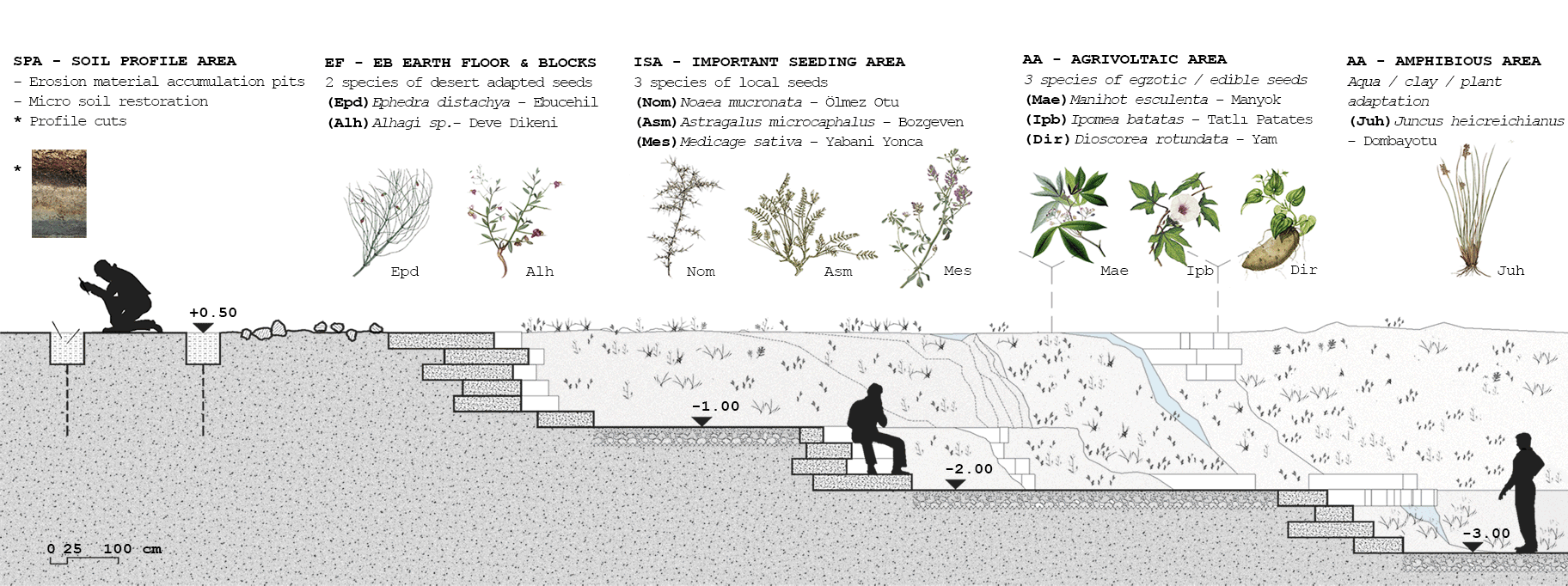
B20_06 Landscape Architecture Project Principle Section
Events of Soil

machine - sculpture mode 1st

machine - sculpture mode 2nd
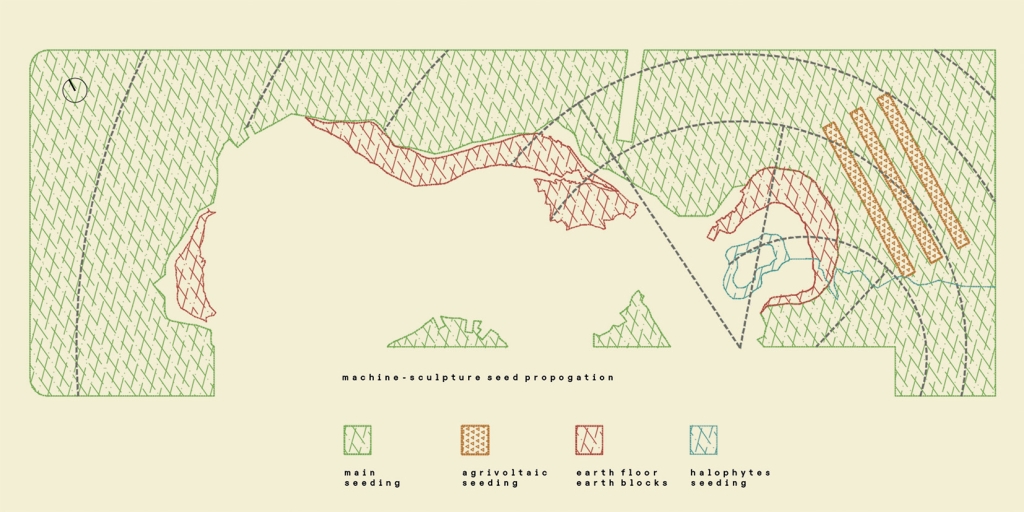
machine - sculpture seed propagation
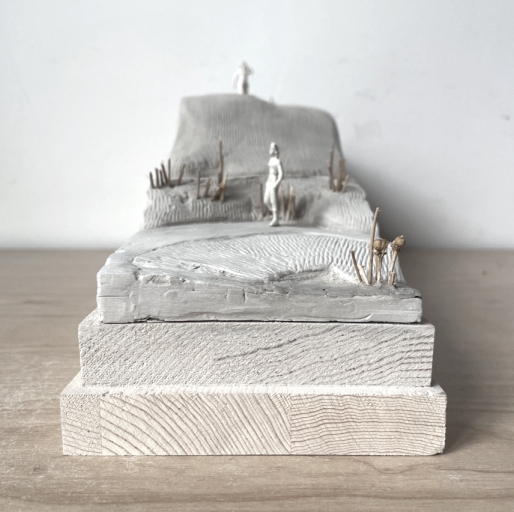
Pine Box Fixed Clay Material. Scale 1:50 Size 10 x 40 x 12 cm

Acrylic and Pine Box Fixed Clay Material. Scale 1:50 Size 10 x 40 x 12 cm

Works on the table and in-Situ.